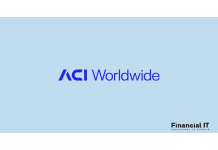myPOS Completes Acquisition Of Munich-Based LAVEGO
- 11.12.2025 02:30 pm
LLP Exotic Auto Finance Chooses ACI Worldwide To...
- 11.12.2025 02:15 pm
Mollie To Acquire GoCardless, Creating Europe’s Most...
- 11.12.2025 02:10 pm
EBANX Drives The Next Phase Of Credit Cards In LatAm...
- 11.12.2025 02:05 pm
HBX Group And Mastercard Launch New Virtual Payment...
- 11.12.2025 12:15 pm
Airwallex Doubles-Down On UK And Regional Growth By...
- 11.12.2025 12:15 pm
Starling Bank Launches New Tool To Help Customers Be ‘...
- 11.12.2025 10:35 am
Mastercard Collaborates With TerraPay To Unlock...
- 11.12.2025 10:25 am
Ecommpay Gains Full Digital Accessibility Centre...
- 11.12.2025 10:25 am
Checkout.com Research Signals First AI Christmas, With...
- 11.12.2025 10:15 am
Banks Must Educate As They Innovate: Over A Third Of...
- 11.12.2025 09:45 am
Ant International And HSBC Test New Cross-Border...
- 11.12.2025 09:15 am






















